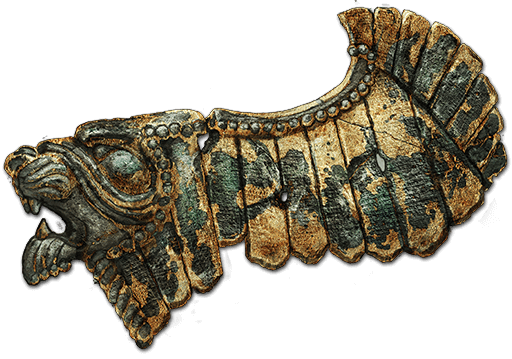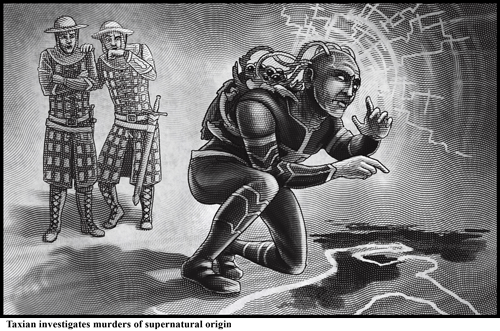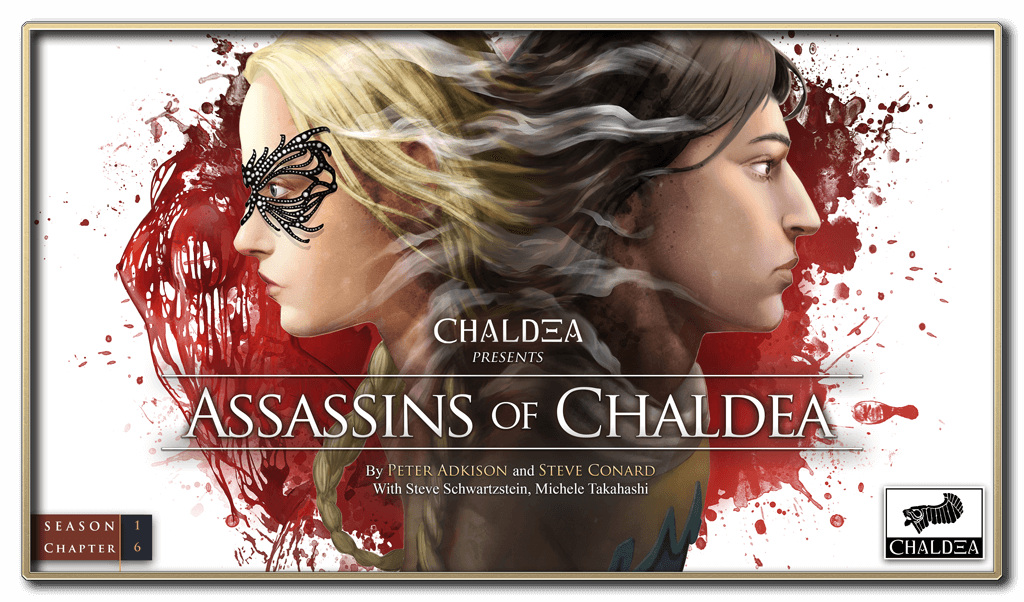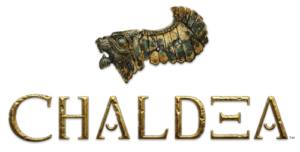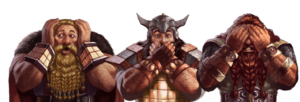
Shelby Chartrand, Augstat, Hesse
After a series of grisly unsolved murders shook the residents of Boars Kriese and the city of Augstat at large, authorities have grown increasingly frustrated with the stalled investigations and have resorted to extreme measures, hiring a Taxian Psionicess from Saratof.
From his office in the Round Tower, Grand Master Kane Kurig held a briefing in which he took questions.
“Yes,” he said, “I’m frustrated. We scarcely have time to remove a body before another victim pops up just a few streets over. Corpses are piling up in the mortuary like cord wood, and people are rightfully scared.”
At last count, thirty victims have been linked to a singular list of related murders, though authorities refuse to label them as such for fear they could turn the attacks into an international sensation.
“Mystery? Ja, the whole affair is a mystery, thank you for your bold interpretation,” Kurig addressed one journalist. “We have no evidence or motive to track the perpetrator or perpetrators—whether that is man, animal, or something else that is plaguing our city. We have elected to consult the Anumians and see what that brings.
“The Hecks are soldiers and fine officers of the peace,” he added, giving the Chaldea salute to the pair of knights leading the investigation, “but frankly, we are out of our element with this situation, so I have made the decision to enlist the aid of the Taxian Syndicate.”
Those present seemed ill at ease regarding this announcement. Taxians in Augstat? questioned one woman, her tone implying disbelief.
“We’ve already made progress,” Grand Master Kurig continued as he introducing to the assembled crowd Breviloq, a gaunt Taxian dressed in a black-and-red leather bodysuit. As at the mention of his status, the onlookers shifted uncomfortably in the mentalist’s presence. A giant green insect, approximately two-feet long clung to the Taxian’s back with its eight legs wrapped around his chest and abdomen, its thorax pulsing as it breathed, and its pincers clutching the man’s neck as it chittered what sounded like an alien song between its teeth. Blue tubes of pearlescent substances pulsed from the insect said to be feeding directly into the Taxian’s brain.
At least one member of those gathered for the briefing protested the presence of the Taxian by abandoning the presentation. Those who remained appeared distressed.
Breviloq continued the briefing in Kurig’s stead. “This morning on Harbor Loop East, we discovered an emaciated corpse of a halfling woman, a maid servant dead for at least four weeks. Her flesh was shredded, and she had been decapitated.
“Hidden down by the docks under pilings were two more victims, also long dead, perhaps as much as two to three months: a woman and a man, both human, their throats shredded in a similar manner, their bodies unrecognizable. Sailors.
“A short while later, we found a fourth victim in a park, buried in a grave near the southern wall. The woman’s throat was cut, nearly decapitating her. She was missing teeth, and her skull had been crushed as if struck by a large blunt instrument. This is sixteen-year-old Phyllis of Elandin Heights, who disappeared while returning home from the theatre with her boyfriend Petyr 42 years ago. This boyfriend and an accomplice murdered Phyllis after they stole a family heirloom pendant from her that she had received on her sixteenth birthday. I have determined these details because Phyllis’ spirit haunts the garden where her body was found, and she has been waiting a long time to tell her story. Her boyfriend Petyr is now sixty-two years old and lives on Lower Moon Road in Elandin Heights. He was taken into custody an hour ago.
“These are the last of the murder victims, and the case is now closed.”
The room erupted in protests and surprise. When the Taxian called for quiet, however, everyone present fell silent at once as if compelled to do so.
“I’ve determined these murders to be of a supernatural origin. The crime scenes I’ve inspected, those discovered today and others, have no lasting psychic impressions—hate, anger, revenge, fear—as one would normally expect to feel at traditional murder sites, such as the case of the sixteen-year-old Phyllis girl. Furthermore, the area around the bodies was wiped clean of psychic trauma. To accomplish this requires a supernatural technique to cover one’s tracks. They—whoever they are—are quite exceptional at this, likely a ghoul, a devilkin, or perhaps a vampire. Whatever the case may be, they do not wish to be found and likely will not. I have ascertained the perpetrator is aware of my presence and has departed the area, possibly even fleeing the city to find new haunting grounds elsewhere. They will not return to Augstat, I am certain, at least not anytime in the foreseeable future. As insurance, I have agreed to extend my contract with the city and will stay in Augstat for the next month. Your city and its citizens are now safe from this menace. You may go in peace.”
Breviloq’s infamous “go in peace” briefing was a month ago, and the city has never been safer; not a single murder or even a minor assault has been recorded. It’s a widely held supposition that criminals in general do not wish to test the limits of a Taxian Psionicess for fear he would quickly discover their crime. Whether or not this is accurate, the trepidation his presence causes has cast an anxious pall over Boars Kriese, such that even the Black Daggers reportedly have slowed operations.
His one-month contract extension with the city fulfilled, Breviloq left with this morning’s tide back to Saratof, and in his absence, the question of the city’s safety is once again the topic of speculation, gossip, and rumor.


Dietta the Mouse, Augstat, Hesse
Two friends walked across the continents of Niessia and Tamica—a thirty-two year journey of reflection and self-discovery to find themselves.
Of course, every journey begins with the momentous first step. For these two friends, it began with a ship catastrophe in which both their husbands were killed at sea while fishing. Heartbroken, childless, and with nothing but apathy and despair holding them down, they began to walk.
“We only meant to visit Avdat,” said Canice Mac Giolla, a halfling woman originally from Perrin, who followed her husband to Haluza. “Avdat is known for its Capitoline Triad architecture, and I’d always dreamed of seeing it.”
“A couple of weeks later, we toured Avdat,” continued Valvhinnie, a desert elf who lived her entire life in southern Ardaya. “We took in the city sites and toured the jeweled temples and Olympian gardens.”
“So, with nothing else to see, we asked ourselves, what next?” said Canice.
What was next was an epic thirty-two year journey that took them across two continents—they began in the Nabatean trade city of Haluza on the southernmost tip of Niessia and ended in Gosh in the kingdom of Pheles, the farthest west one can travel. A 900-league journey, as the Gekkon flies.
“Rocks in my boots, that’s what bothered me most,” said Canice when asked about the hardest part of their journey. For Valvhinnie, it was backtracking to retrieve something forgotten or lost.
One step at a time, they faced perils both nature made and human contrived. They ate with Fomorians, raced against giants, slept with lions, rode on dinosaurs, and ate every conceivable thing to avoid starvation, once stealing a roasted orc from a witch’s stewpot. They survived harsh weather conditions, escaped from river pirates, and impersonated legionnaires. Any misstep along the way could end in potential disaster, serious harm, imprisonment, or worse, and still…they pressed on.
Once, they were enslaved for seven years by a Tuatha de Danaan fairy prince.
“Rioghain, he was a right bastard,” said Canice. “Being his slave was definitely a low point.”
How did they escape?
“Read the book,” they answered in unison, grinning.
Near the six-month mark of their journey, the two began documenting their misadventures, which they have compiled into a book entitled I Walked Twice as Far.
“I did walk twice as far,” said Canice, lifting her skirt to show her diminutive legs. “My legs are half as long as Val’s.”
“I keep telling her it doesn’t work that way.” Valvhinnie kissed her friend. “Sometimes we stopped for a while in cities or village, taking on odd jobs to heal up and replenish our supplies.”
“Val worked as a nude model for an art school in Regis,” Canice laughed. “A Latium senator took a liking to her and offered to purchase one of her paintings as long as she agreed to come with it. That was a sign: it was time to move along.”
“We weren’t in a hurry,” said Valvhinnie. “We were happy just being together and seeing the world.”
The list of odd-jobs and talents acquired along the road is almost as impressive as their journey. While one was a butcher, another was a minstrel, and their impressive list of jobs runs the gamut from brewer to farmer to candlestick maker. For a time, Valvhinnie even worked as a blacksmith for our very own Lordint Durjak here in Augstat.
“Thirty-two years. It’s hard to believe it’s been that long,” Canice said, turning to Valvhinnie. “Doesn’t it feel like just last month when you suggested we visit Avdat?”
“Should we make the return trip?” Valvhinnie suggested with a wink. “How about Somarria?”
I Walked Twice as Far goes on sale this week.


Pensive Penelope, City of Gleem, Perrin
Soldiers crowded Persante field outside of York in a spectacular display of military might, marking the quarter-millennial anniversary of the Battle of Hoggur Hoard. The Martial Review, attended by Perrin nobles and senators of the empire, included King Laurent de Perrin, Queen Lucette, and the full retinue of senior royals.
The month-long celebration began with the Martial Review, a show of international friendship, led by the king as Field Marshal of the Perrin Army. The event began with a somber Drumhead Remembrance Ceremony for those valiant soldiers who paid the ultimate price for beating back dragon aggression.
Some 5,000 soldiers representing kingdoms from all over the empire participated in the Martial Review: Akkadian Sirkatu; the Hecks; heavily armored Hessen knights; Dorsang Abmaxtoi guardians; Ardayan Trinity on camels; the Hakhamanesh Thunder heavy cavalry; Muromachi Kyu Bushi archers; Mycenae Hoplites; Roosh Varvary hussar; Dwarven Host from Stollhofen; Athel archers from the Lynnwood elves; Vlachia Impalers with polearms of every conceivable length; Targonian Blessed Ones shield archers; and Ta Shemau Shemsu charioteers. As part of the review column, Andalus Alcazar busters paraded with advanced mobile siege weapons.
The Martial Review rear guard was anchored by the Imperial Legions: the senior Tribune led centuries from each of the twenty Imperial Legions. Finally, the entire 2nd Legion, ten thousand legionnaires and auxiliary commanded by Legatus Boro, made their appearance.
The Hoggur Hoard
One of Perrin’s many creation myths tells of the birth of Chaldea in ancient times. Once, all the continents and lands of Chaldea were united as a single giant continent floating upon the Great Sea. The ginnung-dragon Nidhoggur, an apocalypse brute whose ravenous hunger was described as unquenchable, sated his appetite by gnawing on the world tree, shaking the universe violently, and in the turmoil of that shaking, he broke Chaldea, shattered the land into the continents they are today. During the breaking, a tooth ripped from Nidhoggur’s maw fell upon the land of Perrin, spawning a hoard of Hoggur dragons—flightless land dragons with appetites and the desire for destruction equal to their sire. A piece of the world tree, sheered away from the gnawing, also fell, landing in what is now the City of Gleam, and from that splinter grew the Ash Tree of Gleam.
This children’s bedtime fable likely came to be in order to explain the high population of dragons living in Perrin, a kingdom with a name that is now synonymous with dragon. Dragonkind live all over Chaldea, but no place is as densely packed as the island kingdom of Perrin, the heraldic symbol of which is, of course, a dragon.
The indigenous dragon culture in Perrin spit venom and breathed fire at the invading humans, who relocated to Perrin soon after the Claw Hammer War and have since waged unending wars against humankind, dwarves, elves, and all humanoid things brought to this world—ironically, brought to Chaldea by dragons in the first place.
The Battle of Hoggur Hoard was fought in the Spring during Greed Week, with the Anumian greed constellation stimulating the dragons’ desires by urging the great worms to destroy Perrin and take back their ancestral homeland. The dragon campaign boasted two armies of Hoggur dragons, the first from the Greycloak Mountains supported by troops of orcs and goblins, the second from Lazonmead with gnolls in their ranks. Standing against this dragon assault were three armies of the fourth alliance: a Perrin-led coalition consisting of units from Perrin, Aimilluse, and Roosh, under the command of Major-General Sir Persante, a Perrin knight and future king of Perrin.
York was the decisive engagement of the 3rd Hoggur invasion and marked the end of the dragon renaissance in Perrin. According to Persante, “Perrin fortitude was tempered by the blood of dragons.”
The events that led to the Battle of Hoggur Hoard are fragmented and not well-documented, leading to contentious debates among historians. Weeks prior, Hoggur dragons, supported by orc and goblin shock troops, raided villages and towns up and down the Greycloak foothills, each skirmish escalating until ultimately the dragons assaulted High Styriana, a diversionary tactic intended to mislead Perrin into believing the dragons would come from the north. Instead the main assault came from the south and was commanded by the dragon general Malm the Elder. He ordered his troops against the district of York. And by splitting his forces, he struck Dungarth and Battlegate simultaneously while a second army, led by his brother Undrask, swept up from the south, routing Stonebury.
The Aimilleuse Grande Armée led by Marshal Brune, the Duke of Toulouse, and the Roosh army led by Grand Prince Likhachov bivouacked their forces in the thick Todmorden Forest and then waited ten days in inclement weather to spring their loaded trap. Stonebury was lightly fortified and manned with skeleton defenders to put up minor resistance, only enough to suggest to the dragons that Perrin was weak and ill prepared. Once the Hoggur were firmly entrenched inside and preparing to advance on York, Marshal Brune and the Grand Prince Likhachov’s forces counterattacked, striking Stonebury on three fronts and breaking the gnoll defensive positions before moving against the main citadel and the Hoggur. Fighting lasted two days and nights until a young Rooshen, Yesaul Uliana of the Perth Cossack Host, smote the dragon general Undrask. The second Hoggur army was subsequently routed, the remaining gnolls scattered, and these were followed later by a few remaining minor Hoggur.
“Valiant are my sisters and brothers who lay in the belly of that dread beast that I might taste glory.” —Uliana of the Perth Cossack Host
On the plains northeast of York, Major-General Sir Persante led the largest Perrin army ever assembled of infantry, cavalry, and knights against Malm the Elder at Dungarth. The first stage of the battle lasted four days, and when the sun set on the fourth day, 21,000 Perts lay dead while some 15,000 orcs, 17,000 goblins, and a staggering 200 hundred dragon corpses burned on the field.
Charge of the Perrin Heavy Cavalry
On the evening of the fifth day, with Greed week at an end, Lust rose to apogee. Nabu Pabu, the Akkadian seer, explains Lust’s motives: “Lust invites us to pursue our desires yet stands ready with consequences for those who do so thoughtlessly.” Consequences were precisely what Sir Persante intended to inflict.
Perrin siege infantry had managed to keep Malm’s first army sequestered in Dungarth until Greed week was over. This delaying tactics paid dividends. Persante’s second army, led by Marshal Brune and Grand Prince Likhachov, had routed the enemy at Battlegate, and their columns now advanced on Dungarth.
Facing three armies and his strength reduced by nearly forty percent, Malm ordered a retreat. At this critical juncture, Sir Persante took the field upon his charger, bearing the head of Undrask. The sight of his brother’s head on a metal pike, combined with Persante’s insults and ridicule, sent Malm into a blood rage; a hasty retreat turned into a perilous advance. Persante ordered his three brigades of Perrin heavy cavalry—formed behind the knight—to charge Malm.
Persante led the charge, wielding a lance hewn from the Gleam ash. The splinter of the world tree ended Malm the Elder that day and drove the Hoggur hoards, few and demoralized, back into the Greycloak, where they have remained.
Persante Field, the site of the battlefield, is today dominated by the Hoggur Hoard burial mount that contains all the remains of the Hoggur army. The mount is capped with a marble statue of Sir Persante lifting the Gleam Ash Lance, Uliana at his side standing on the corpse of Undrask.
Descendants from the battle of Hoggur Hoard, the sons and daughters of Persante, come together in annual celebration, and the quarter-millennial anniversary is the largest and most extravagant yet.


Hasala of Stahleck, Augstat, Hesse
The nomadic tribal societies of Somarria, colloquially known as “barbarians,” are often falsely depicted as caricature of raiders, killers, and bloodthirsty, cruel bandits preying on the fringes of society. In books and fireside tellings, graver barbarians are romanticized as noble savages who dance with death by day and with fair maidens by night. Civilized attitudes and views on barbarians often inappropriately generalize them as heartless berserkers who worship gods of frenzy and death.
While outsiders unaccustomed to the barbarian nomadic lifestyle—and its kill-or-be-killed attitudes—may feel unsympathetic about a seemingly merciless way of life, a fiery kinship with violence and death provides the barbarians a grand level of exuberance and enthusiasm in everything they do. They attack their leisure time with gusto and zeal, and they enjoy drink and play as much as any other peoples of Chaldea, if not more so.
Austragothi Hastilude—Triennial Pilgrimage Gathering
Every three years, the barbarian clans of Somarria gather en masse at Austragothi (the burial site of Somarr the Austragoth, the first barbarian king, who journeyed from the savage world of Austra to Chaldea through The Veil in the Mountains of Chaos). Austragothi is a revered, almost religious site to the nomadic tribes of Somarria—who approach the hallowed ground with both awe and admiration. The weeklong hastilude celebrates the life and death of Somarr through martial games, business, and politicking.
For weeks leading up to this year’s games, clans arrived at Austragothi from all corners of Somarria. The K.I. sent one of our own to embed with a clan and witness the games and other unique events firsthand.
The heart of the barbarian hastilude is Austragothi, a permanent unpopulated village on the forward northern edge of the Arushan plains along the Boyonogo River. The ancient Nordic village contains many roughhewn log structures: long houses, barns and stables, smithies, docks and storehouses. Jointly held and operated by all the clans, it remains strictly off-limits in the years between hastilude games. Three shaman guardians are charged with protecting and maintaining the village, an honor shared amongst all the clans—each clan serves a three-year stint before handing off the role to the next clan. This cherished custom dates back hundreds of years.
The first to arrive is always the northern Baars clan from Arusha, a nomadic clan that historically arrives before all others, as their territories are adjacent and the closest to Austragothi. Their appearance marks the unofficial kickoff of the hastilude season.
Once the Baars arrive and claim their camp site, Austragothi comes to life quickly. Next to arrive are the Glaburs clan from Tete, followed by the Frisili from Targonia a few hours later. The next day two more clans join—Iribian and Maygar—and seven more the day after (Gosts, Xaons, Lavs, Suhans, and Gombal). By week’s end, 500,000 Somarrian barbarians are encamped around Austragothi, turning it into the largest city in Somarria.
The Games
Barbarians cherish physical competition and the glorification of gratuitous violence: warrior versus warrior and animals versus animal combat. Men, women, and children participate equally, bringing honor and prestige to their respective clans.
The most popular games are based on warrior skills, fierce competitions involving hand-to-hand fighting, arena and pit fighting, sword, axe, and hammer. Add to this ranged weapons, archery, spear, and axe throwing, and then competitions in horsemanship, racing, and equestrianism. Athletic competitions include running, jumping, swimming, wrestling, and the stone assault obstacle course, where spectators toss rocks at participants—which always results in a death or two.
Such brutal violence is bound to cause harm; even in “friendly” competition, participants are often disfigured or even killed. Injury and death are to be expected during the hastilude. “A satisfactory outcome to a fine competition” is the sentiment held by all who participate and watch. This year’s games resulted in seven deaths, thirteen dismemberments, and countless other injuries, including cracked skulls, broken limbs, myriad cuts and gashes, torn ears, gouged eyes, and ravaged scalps.
The hastilude is not limited to only barbarians. Animals of all kinds are made to fight: bears, horses, dinosaurs (large and small), rhinos, lions, and boars. Even the humblest squirrel, altered by Marn alacrity potions, is ready to piss venom and breath fire. Back among the clans, the victors are revered, loved, cherished, even worshipped, and are specially bred for future contests.
Humanoid slaves are forced to compete as well: goblins, orcs, and gnolls, sometimes even ogres are tossed into pits and made to fight with weapons or sometimes just their bare hands and teeth. They compete in all manner of death matches. If it’s a contest of wills involving violence and slaughter, it is omnipresent at the gathering of the clans.
The highlight of the week is the most awe-inspiring spectacle of size and strength: Aur-lagore (“mountain clash”). Giant mountain bull aurochs from the icy lands of Frosthook collide in fierce battle that inevitably culminates in crushing death. Towering upward of twelve feet at the withers, these massive creatures make the ground quake when their hooves churn, throws when they collide, the land buckles and shudders, trees sway violently, and the shock sends many a barbarian on their backside. The number of people thrown to the ground is meticulously counted and recorded on the bull’s horns. Ninety years ago, Auromorrillo, a sixteen-foot-tall withers bull, knocked a staggering 8,303 spectators to the ground, a feat no other bull has come close to matching. The winner of the aur-lagore is sacrificed to Somarr in a grand celebration of fire; afterward, the prize bull is butchered and becomes the centerpiece of the final feast at the end of the games. Its horns, once harvested, are permanently displayed in Somarr’s longhouse.
The hastilude, for all its savagery, also features more benign festival pleasures: a rollicking circus and carnival, a farmers’ market and craft faire with and abundance of eclectic sideshow attractions, commerce, and trade.
In the months leading up to the games, the clans traditionally call a temporary truce, put aside their differences, sheath their swords, and cool their hostilities in order to come together as a grand extended family. Most of the clans want to celebrate and participate in the games but also use the opportunity to engage in trade talks and negotiations, which is key to clan survival. Clan leaders and elders convene to discuss clan affairs, treaties, laws, and such. Social activities abound—marriages, proposals, wheeling and dealing, spiritual revivals, rites of passage, and an entire host of other interactions structured around the games. Samsu-Esuh, the Akkadian philosopher who wrote Total State, the Akkadian Philosophy, once said, “You can judge a society by its entertainment.” After witnessing the barbaric hastilude events at Austragothi, I have to admit I was happy to return to Hesse, where I wouldn’t be handed a sword and thrown into a pit to fight with ogres or aurochs. And yet I couldn’t help but have respect for these nomadic people and their fierce lifestyle. Their rapport with death augments their sense of self and helps them appreciate and cherish the precious life lived.


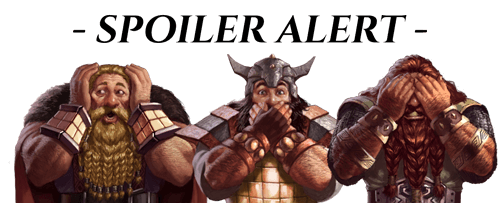
K.I. Issue #111 contains potential spoiler material.
DO NOT READ
until after viewing…


Issue #111

